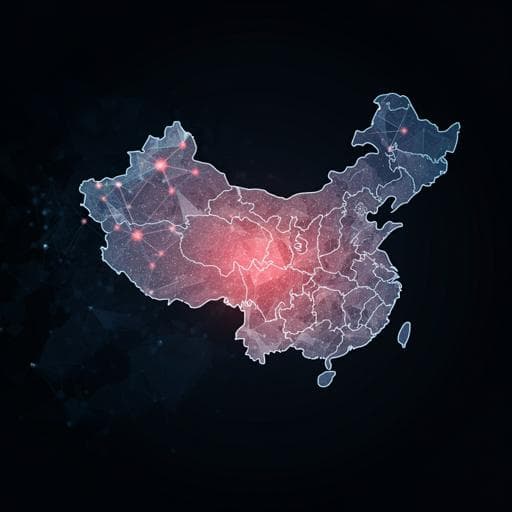
Economics
Can carbon trading policy boost upgrading and optimization of industrial structure? An empirical study based on data from China
D. Chen, H. Liao, et al.
Discover how China's carbon trading policy is reshaping industrial structures and driving technological innovation. This insightful research by Daoping Chen, Haifeng Liao, and Hong Tan reveals the varying impacts across regions and urban characteristics, offering a fresh perspective on sustainability and economic growth.
~3 min • Beginner • English
Introduction
The study examines whether carbon trading policies (CTP)—China’s market-based emissions trading instruments—promote the upgrading (UIS) and optimization (OIS) of industrial structures while curbing emissions. CTP encompasses defining emission-control scope, cap setting, quota allocation, trading, MRV, and compliance mechanisms. China’s rapid industrialization has yielded high-pollution, extensive growth, necessitating structural upgrading and rationalization to support high-quality, green development. The research question is whether CTP, by affecting firm behavior via costs, incentives, and potential relocation, fosters higher-value, technology-intensive industries (UIS) and better inter-industry coordination and resource allocation (OIS). The study is important because empirical evidence on CTP’s effects on industrial structure, and the mechanisms (notably technological innovation), remains limited despite growing carbon markets and policy relevance.
Literature Review
The literature spans: (1) Carbon trading mechanisms: The Kyoto framework led to market-based emissions trading (CDM, JI, ET). Design issues include quota allocation (current emissions, historical emissions, carbon stock) and auctions to mitigate adverse selection; improvements in legislation, multi-level markets, and cross-regional coordination are emphasized. (2) Emission reduction effects of CTP: Quantitative studies generally find significant reductions in emissions/carbon intensity and improvements in carbon productivity, though market imperfections (price instability, low liquidity) can limit effects. (3) Economic impacts: Evidence suggests CTP can promote high-quality growth and innovation, with heterogeneity by allocation method and region; some studies find weaker or non-significant Porter effects. (4) Industrial structure: Theoretical mechanisms include compliance cost (forced exit/cleaning), pollution haven (industry relocation), and Porter hypothesis (innovation-induced upgrading). Empirical findings are mixed; some show emissions trading promotes upgrading but not rationalization and varies regionally. Gaps remain in city-level empirical analysis and mechanism testing linking CTP, technological innovation, and industrial structure.
Methodology
Empirical strategy: A difference-in-differences (DID) design exploits China’s CTP pilots (experimental group: cities in pilot provinces; control group: non-pilot cities), with 2011 as the policy start. Model includes city and year fixed effects; interaction treat×post identifies CTP’s net effect.
- Outcome measures: Upgrade represents two dimensions.
- UIS (advancement), SA: weighted sum of sectoral output shares and standardized labor productivity across three industries (following Liu et al., 2008). SA increases with higher advancement.
- OIS (rationalization), SR: Theil-index–based structural deviation capturing coupling between input (employment shares) and output (value-added shares). SR = Σ y_im,t ln(y_im,t/L_im,t). SR=0 denotes equilibrium; smaller SR implies better rationalization (inverse indicator for OIS).
- Treatment: treat_post equals 1 for cities affected by CTP in 2011+ and 0 otherwise.
- Controls: human (higher-education students per population), gov (public expenditure share of GDP), pgdp (GDP per capita), urban (population density, log), fdi (FDI share of GDP), instr (road area per capita). These are also used for heterogeneity splits.
- Mechanism (mediation) model: Technological innovation proxied by Patent (urban patent applications/1000). Three equations estimate total, mediator, and direct effects; mediation assessed per Hayes (2009), with bootstrap for indirect effects where needed.
- Data: Panel of 201 prefecture-level-and-above Chinese cities (33 pilot), 2004–2018; N=3015. Sources: China Urban Statistical Yearbook and city statistical reports; values deflated to 2004 base.
- Validity and robustness: Parallel trends tested with event-study specification; placebo test with 1000 random pseudo-pilots; PSM-DID using kernel matching; exclusion of 2011 observations; inclusion of fixed effects and controls.
- Heterogeneity: Regional (Eastern vs. Central/Western) via interaction with location; urban characteristics via group splits (low/high) on human, gov, fdi, instr (tercile-based grouping into low vs. high).
Key Findings
- Benchmark DID (Table 2):
- UIS (SA): treat_post positive and significant. Coefficients: 0.178 (t=7.10) without controls; 0.202 (t=8.65) and 0.185 (t=7.79) with controls under different FE specifications. Indicates CTP significantly promotes industrial upgrading.
- OIS (SR): treat_post negative as expected. Coefficients: −0.003 (ns), −0.003 (ns), and −0.006 (t=−2.28, 5% level) with controls and FE, indicating modest improvement in rationalization (lower SR).
- Controls: For UIS, human, pgdp, urban, instr positive; gov and fdi negative. For OIS, human and fdi positive; gov and pgdp negative.
- Dynamic effects (event study, Fig. 1): Parallel trends satisfied pre-2011. UIS effects become significant from 2013 and grow thereafter (∼2-year lag). OIS effects turn increasingly negative (beneficial) after 2014, indicating a longer lag for rationalization.
- Robustness (Table 3): PSM-DID yields SA 0.185***; SR −0.006**. Dropping 2011 observations: SA 0.197***; SR −0.006**. Placebo tests show null effects in random assignments (t-values mostly within ±2), supporting causality.
- Mediation by technological innovation (Table 4):
- CTP→UIS total effect: 0.185*** (t=7.79).
- CTP→Patent: 7.582*** (t=10.12).
- In SA equation including Patent: treat_post 0.088*** (t=3.98), Patent 0.013*** (t=23.34). Partial mediation established; technological innovation significantly mediates UIS.
- For OIS (SR): treat_post −0.006** remains significant; Patent coefficient not significant in SR equation, but bootstrap (500 samples) indicates significant indirect effect with 95% CI (0.007, 0.013) excluding 0 (two-tailed p=0.000). Thus, technological innovation mediates CTP’s effect on OIS as well.
- Regional heterogeneity (Table 5):
- Eastern cities: CTP significantly promotes UIS; impact on OIS not significant.
- Central/Western cities: CTP’s impact on UIS not significant; CTP significantly improves OIS.
- Interpretation: Higher industrialization and innovation capacity in the East favors upgrading; greater space for rationalization in Central/West enhances OIS response.
- Urban-characteristic heterogeneity (Tables 6–7):
- Human capital: High-human-capital cities show stronger effects (UIS treat_post 0.225***; OIS treat_post −0.012*** vs. weaker in low-human-capital groups).
- Fiscal expenditure: High-gov cities see stronger UIS gains (0.326***); low-gov cities exhibit stronger OIS improvements (−0.008***).
- FDI: High-FDI cities show smaller UIS/OIS effects (UIS 0.146***; OIS −0.008***) compared to low-FDI cities (UIS 0.225***), suggesting potential short-termism or quality issues in FDI.
- Infrastructure: High-infrastructure cities experience larger UIS (0.214***) and OIS gains (−0.006**) than low-infrastructure cities (UIS 0.176***; OIS ~0).
Discussion
The findings confirm that China’s CTP contributes to both upgrading (shift toward higher productivity and technology-intensive activities) and optimization (better inter-industry coordination) of industrial structures, addressing the core hypothesis that environmental market instruments can foster structural transformation. The stronger and earlier response in UIS suggests that innovation incentives and factor reallocation under CTP are effective in moving industries up the value chain. OIS improvements materialize with a longer lag, likely due to market maturation, coordination needs across sectors, and institutional frictions. Mediation analysis substantiates technological innovation as a key transmission channel, aligning with the Porter hypothesis while acknowledging compliance-cost dynamics. Heterogeneity highlights that policy impacts depend on regional development stages and city attributes—human capital and infrastructure amplify benefits, while fiscal stance and FDI composition modulate effects. These results underscore the policy relevance of complementing carbon markets with innovation, human capital, and infrastructure policies to maximize green structural transformation.
Conclusion
Using panel data for 201 Chinese cities (2004–2018) and a DID plus mediation framework, the study shows that carbon trading policy significantly promotes industrial structure upgrading and, to a lesser extent, optimization. Effects are robust across multiple checks and exhibit dynamic lags (≈2 years for UIS; longer for OIS). Technological innovation mediates the impacts on both UIS and OIS, confirming an innovation-driven pathway. Heterogeneity is pronounced: the East benefits more in upgrading, while Central/Western regions gain more in rationalization; cities with higher human capital and better infrastructure experience larger effects; fiscal expenditure and FDI levels alter the magnitude and dimension of impacts.
Policy implications: strengthen market mechanisms in environmental governance; design CTP and complementary policies to stimulate enterprise innovation; tailor industrial policies to regional conditions; and allocate urban resources (fiscal support, quality FDI, infrastructure, human capital development) to enhance CTP’s structural effects.
Future research: (1) Employ alternative industrial structure measures beyond the three-sector framework, reflecting technological and digital transformations; (2) examine additional mediating mechanisms beyond technological innovation; (3) extend analyses cross-nationally to assess generalizability and global market interactions.
Limitations
- Industrial structure measurement relies on the traditional three-industry classification; may not fully capture modern sectoral dynamics and digital economy shifts.
- Mechanism analysis focuses on technological innovation; other channels (e.g., finance, market competition, industrial linkages) are not empirically tested.
- Evidence is China-specific; external validity to other countries and carbon market designs remains to be established.
- The relative immaturity of China’s carbon market and institutional frictions may attenuate observed OIS effects, suggesting results could evolve as markets mature.
Related Publications
Explore these studies to deepen your understanding of the subject.







